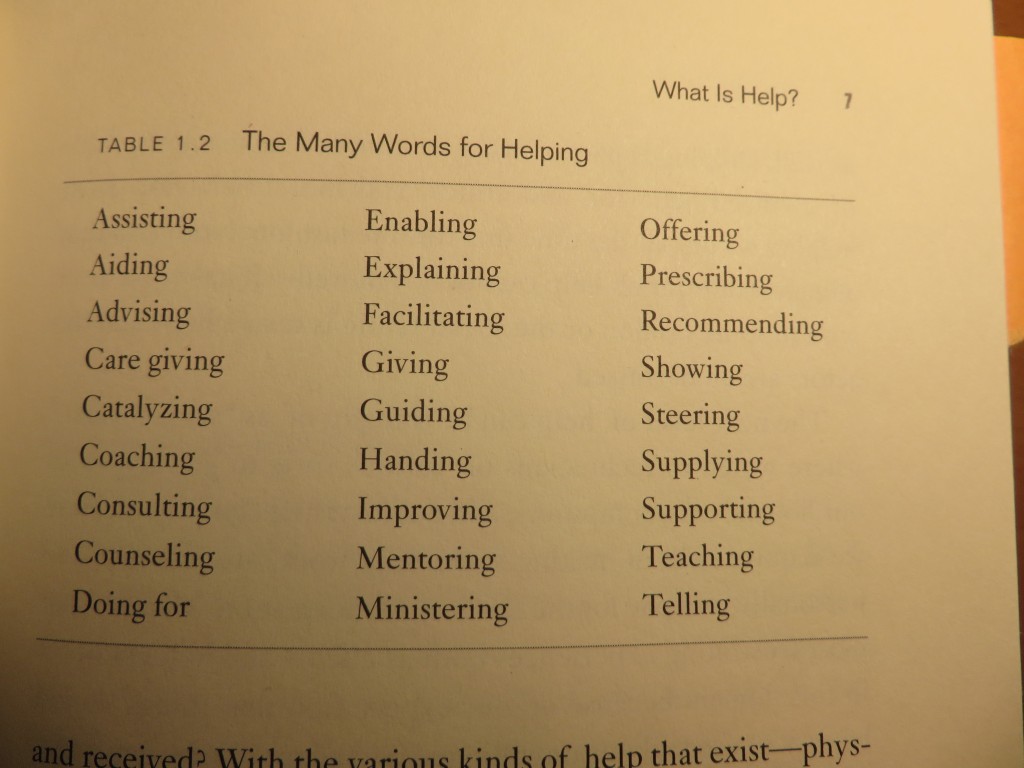Educational development: “The profession dedicated to helping colleges and universities function effectively as teaching and learning communities” (from Felten, Kalish, Pingree, & Plank, 2007, p.93)
As an educational developer, helping is important. Whether I am program planning, consulting, or facilitating, my ultimate aim is to help (to enhance teaching and learning in some way). Schein (2009) notes that there is helpful help and unhelpful help. I know I have done both.
In order to better understand what it means to help, I am reading Schein’s book “Helping: How to offer, give and receive help”. Below are some sense-making notes I have taken and quotes I find particularly useful from the first three chapters (future blog posts will explore the other chapters).
Schein begins by describing two cultural principles that are fundamental to understanding the helping relationship:
- “….all communication between two parties is a reciprocal process that must be, or at least must seem to be, fair and equitable” (p.11)
- “… all relationships in human cultures are to a large degree based on scripted roles that we learn to play early in life and which become so automatic that we are often not even conscious of them” (p.11-12)
He applies the notions of “social theatrics” and “social economics” to describe communication within a cultural context.
According to Schein, “every helping relationship is in a state of imbalance” in the beginning (p.35). That imbalance exists largely because of the unequal power dynamics; the client (the term he uses for anyone seeking or being offered help) is “down” and the helper is “up”. “Being thrust into the role of help is immediately a gain in status and power…” (p.33), Schein notes. The helping process is often impeded because the people involved fail to recognize the initial imbalance. Consequently, neither the helper or client initially knows what to expect and what to give the relationship. So that our help may be helpful, we must address and deal with the imbalance.
Doing so, however, can be difficult because the helper and client may fall into traps.
| Traps the helper may fall into | Traps the client may fall into |
|
|
A successful helping relationship requires that the helper intervene in ways that “build up the client’s status” (p.47). By addressing the imbalance of power, the helping relationship may further develop and become productive.
Reference: Schein, E. (2009). Helping: How to offer, give and receive help. San Francisco, CA: Berrett-Koehler Publishers.

 Follow
Follow